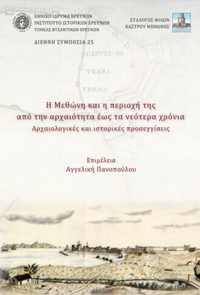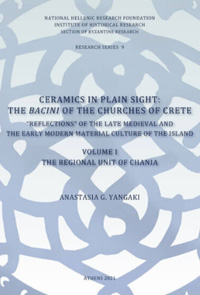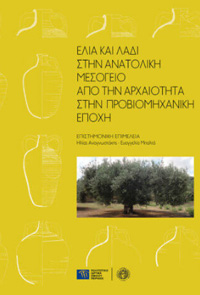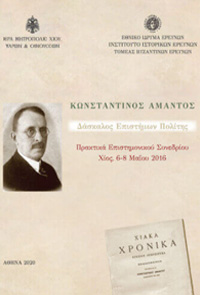Search
CLOSEThe Section of Byzantine Research of the Institute of Historical Research (IHR) was established in 1960 as the Center for Byzantine Research (CBR), with the mission of advancing research and fostering awareness of the history and culture of Byzantium and medieval Hellenism. Its research activities are organised within specific thematic areas into specialised projects that encompass a wide range of fields and disciplines. The relevant studies draw on evidence from literary and archival sources, works of art, and archaeological findings. The projects also investigate Byzantium’s interactions with medieval Europe, the Balkans, and the wider Eastern Mediterranean.
Newsroom
Medieval Epiros and Albania: Geopolitical and Εconomic Reflections in the Light of Coinage
Lecturer
Julian Baker, Ashmolean Museum, University of Oxford
December 08, 2025
18:00
Lecture Series in Byzantine History, literature, art and archaeology
Organised by Kostis Smyrlis, Marina Koumanoudi and Stratis Papaioannou
Institute of Historical Research, NHRF
December 08 - September 29, 2025
18:00
Διοργάνωση: Τομέας Βυζαντινών Ερευνών (ΤΒΕ/ΙΙΕ)
November 04 - May 28, 2025
Clusters
Click on a cluster for more details
Events
Nikos Livanos, Section of Byzantine Research, IHR | NHRF
New Considerations at the Crossroads between Byzantine and Modern Greek Studies – History & Society
16:00
Munich, Ludwig-Maximilians-Universität München
Nikos Livanos, Section of Byzantine Research, IHR | NHRF
New Considerations at the Crossroads between Byzantine and Modern Greek Studies – History & Society
16:00
Munich, Ludwig-Maximilians-Universität München
Maria Gerolymatou, Section of Byzantine Research, IHR | NHRF
Conference “Researching Greek Micronesia”
11:50
National Historical Museum (Old Parliament Building), Kolokotronis Square, Stadiou 13, Athens
Maria Gerolymatou, Section of Byzantine Research, IHR | NHRF
Conference “Researching Greek Micronesia”
11:50
National Historical Museum (Old Parliament Building), Kolokotronis Square, Stadiou 13, Athens
Recent publications

At the Sources of European Poetry in Roman and in Frankish Lands
Epic and Lyric Poetry, Romances (IX-XIV Centuries)
Miltiades B. Hatzopoulos

Methoni and its Region from Antiquity to Modern Times: Archaeological and Historical Approaches
Proceedings of a Two-day Scientific Conference. Methoni, May 16th-17th 2015
Edited by: Angeliki Panopoulou

Ceramics in plain sight: The bacini of the churches of Crete
“Reflections” of the late medieval and the early modern material culture of the island. Volume I: The Regional Unit of Chania
Anastasia G. Yangaki

Edited by: Vassiliki N. Vlyssidou

Edited by: Ilias Anagnostakis, Evangelia Balta

Konstantinos Amantos: Mentor, Scholar, Citizen
Proceedings of the Scientific Symposium, Chios, May 6-8, 2016
Main page image: Cod. Patm. 29, late 9th or early 10th c., containing works of Basil of Caesarea. Detail from the headpiece on f. 2r. / Photograph: Giannis Voulgarakis. © Holy Monastery of Saint John the Theologian, Patmos. By permission of the monastery for non-commercial use exclusively on the IHR / NHRF site.
